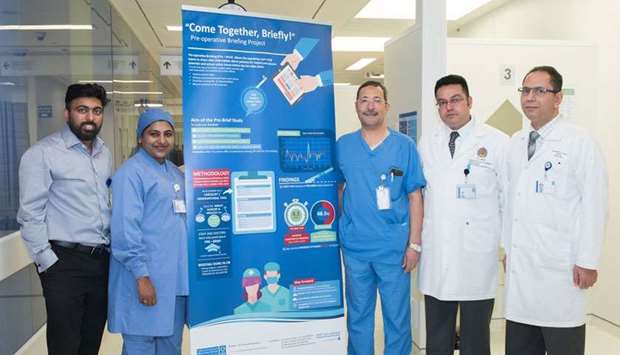Around 4,000 urgent and emergency surgeries performed at Hamad Medical Corporation (HMC) each year, said Dr Abdulla al-Ansari, acting chief medical officer.
He said the 2014 adoption of the World Health Organisation’s (WHO) Surgical Safety Checklist, which was implemented within the Acute Care Surgery section of HMC in cooperation with the Hamad Healthcare Quality Institute, is an example of the continued focus on patient safety. He added that the implementation of the checklist has resulted in improved communication between surgical teams and led to a 50% reduction in delays in the operating room.
“Acute care surgery is an evolving specialty that aims to ensure timely access to high-quality emergency surgical care and improve outcomes for patients with acute surgical conditions. We continue to be focused on improving surgical safety and are delighted to have successfully implemented the WHO’s Surgical Safety Checklist. This simple checklist has been shown to significantly reduce surgical complications and through its implementation, we have helped patients achieve faster recovery rates and improved health outcomes, including reducing the length of hospital stay. The checklist has also contributed to reduced waiting lists for operations,” said Dr al-Ansari.
Various conditions including acute appendicitis, gallstones, pancreatitis, intestinal obstructions, and diabetic foot infections are among the most common conditions that require urgent surgical intervention. Dr al- Ansari says HMC’s Acute Care Surgery section, which is comprised of more than 50 members, provides an advanced model of care for patients who require urgent and emergency general surgery.
The WHO Surgical Safety Checklist is a patient safety communication tool that is used by nurses, surgeons, anesthesiologists, and other operating room professionals to discuss important details about each surgical case. It involves a series of steps and checks that ensure everyone knows the information they need to know. HMC is among the first hospitals in the region to implement the checklist.
Every operation has a series of steps that must be performed correctly every time and Dr. Rashad al-Fkey, consultant, acute care surgery and chairman of the Perioperative Quality Committee, said the use of a surgical safety checklist helps prevent communication failures and reduces complications.
“The checklist includes a briefing, sign in, timeout, sign out, and debriefing. During the briefing, which generally happens at the beginning of the day, all team members meet. During this meeting, the team is formally introduced to each other and the various operations scheduled for that day are discussed in detail. This is done to ensure the needs of each patient can be fully met. Next comes the ‘sign in’ which occurs before the induction of anesthesia and before the first incision is made. During this phase, the medical team will ask the patient his or her name to ensure it matches their medical record and that the patient consents to the surgery. The patient will be asked to confirm the specifics of the planned surgery, and it will be confirmed that the proper surgical site markings have been made. Medication allergies will also be confirmed,” added Dr al-Fkey.



